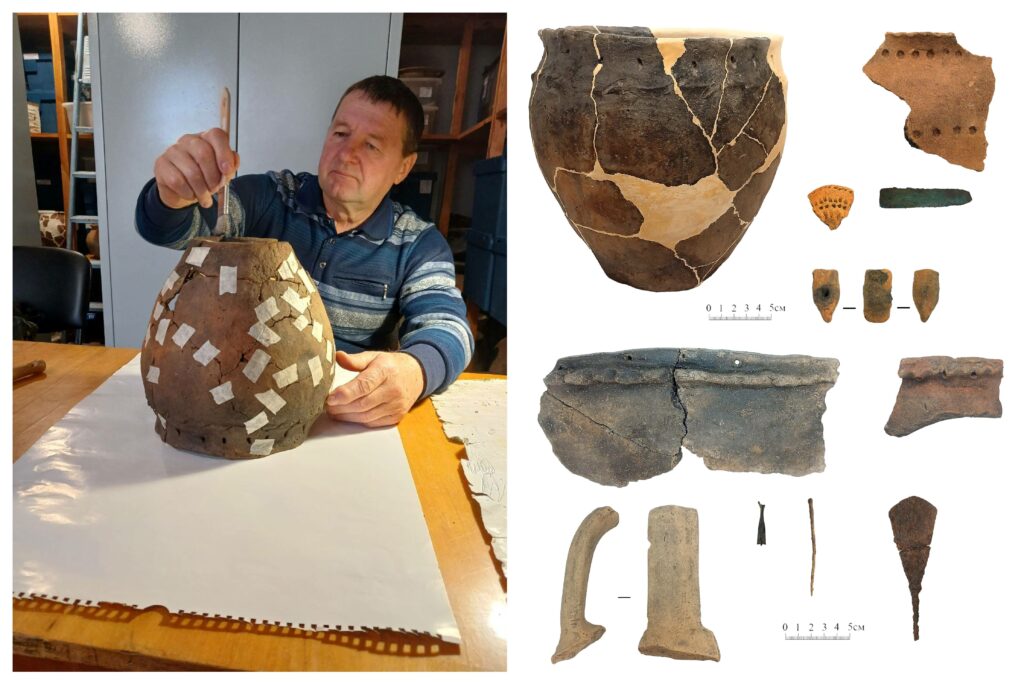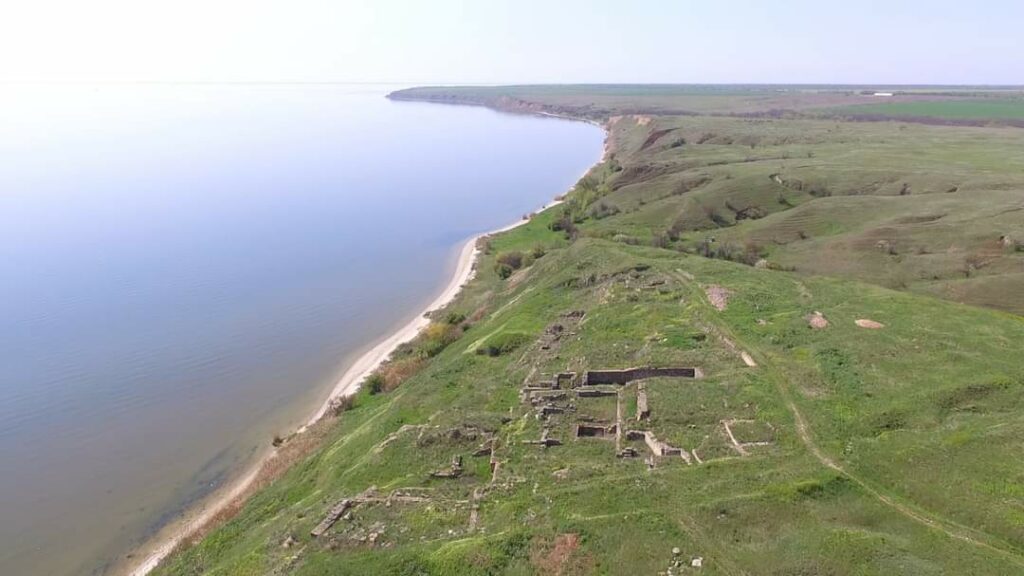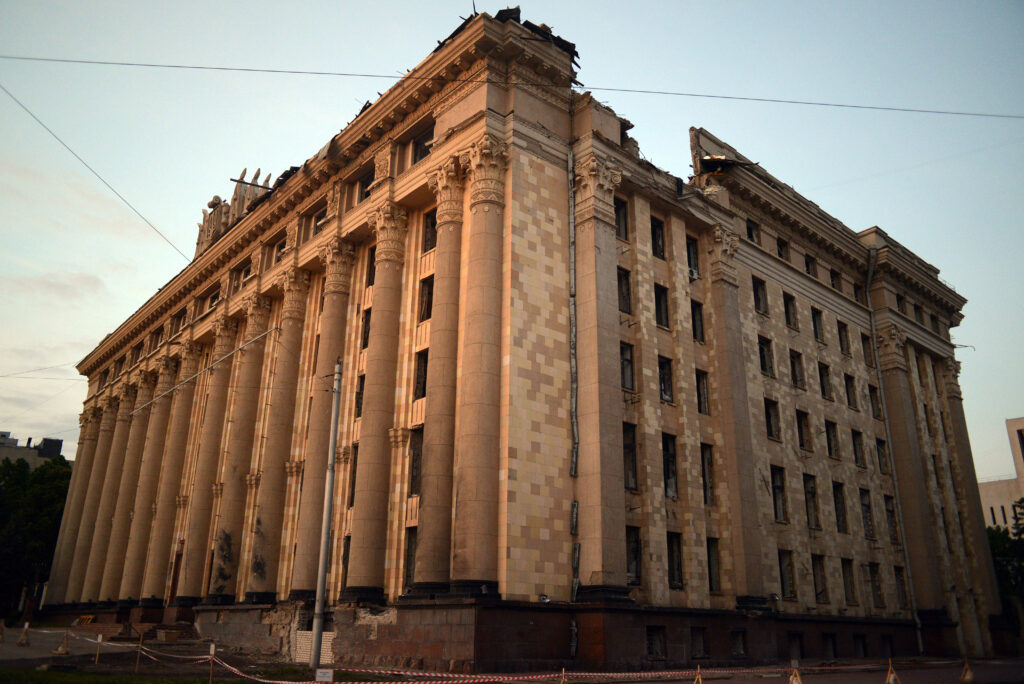The Vorskla River valley in Eastern Ukraine is characterized by its low and partly marshy left bank with sandy terraces bearing traces of settlements from the Mesolithic to the Middle Ages. Today, much of the area is forested, but some parts face destruction due to several natural and human factors. In 2023, the expedition of the Historical and Cultural Reserve „Bilsk“ focused on studying two key settlements, Staryi Karier and Kotelva II, which are threatened by ongoing sand mining and are in urgent need of rescue excavations. Oleh Shaporda, Chief Custodian of Funds, and Ihor Korost, Director of the Historical and Cultural Reserve “Bilsk”, will report on their current work dedicated to preserving information from these two sites.
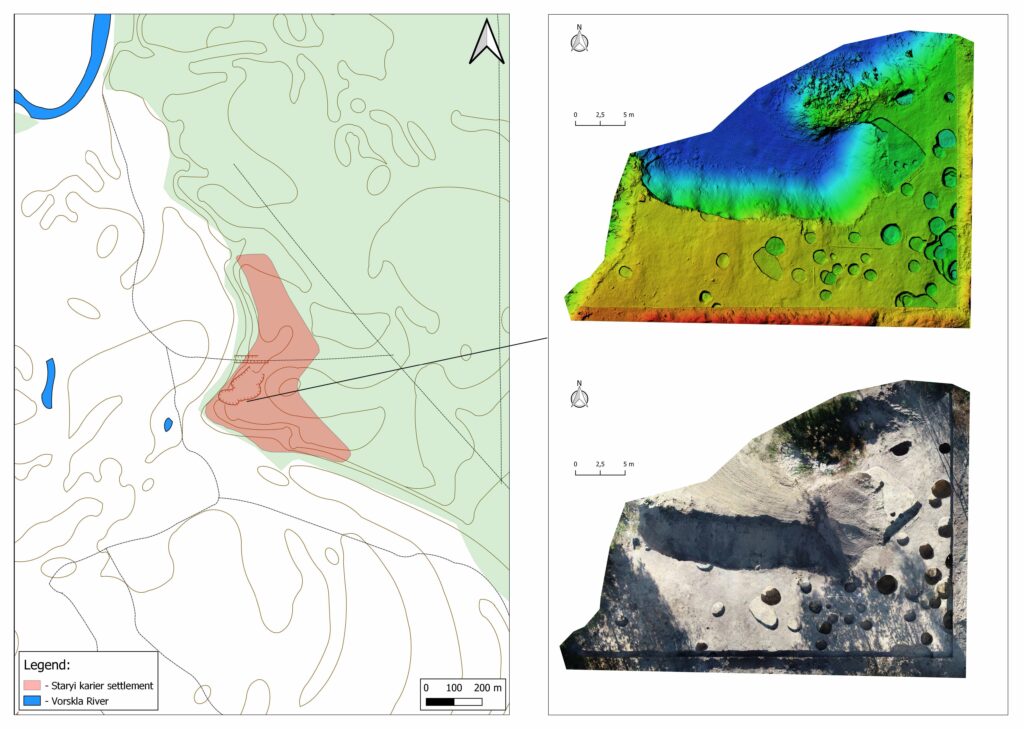
The settlement of Staryi Karier (Fig. 1), discovered in 2021, is one of the most interesting monuments in the middle Vorskla river region. Several layers dating to different epochs, particularly, the Bronze Age and the Early Iron Age, and the diversity of cultures and cultural influences of the post-Zrubna period (12th–10th centuries BC) indicate the importance of the settlement for this micro-region. The Early Iron Age contexts date from the late 6th to the first half of the 5th century BC. Hellenistic imports among the artefacts indicate a special place of the settlement in the area of influence of the Bilsk hillfort.
The 2023 research yielded valuable archaeological material from both settlement periods (Fig. 2). In particular, from the Bronze Age a bronze knife blade, a significant number of hand-made ornamented ceramics, including a complete pot, and stone tools were recovered. Fragments of Hellenistic imports, an iron needle, a pin, an awl and a shell plate, a bronze arrowhead blank, and samples of local stucco ware with typical ornaments of the time date to the Scythian period. In addition to the Bronze and Iron Age objects, several artefacts of the Golden Horde period were also discovered, namely iron arrowheads and a knife.
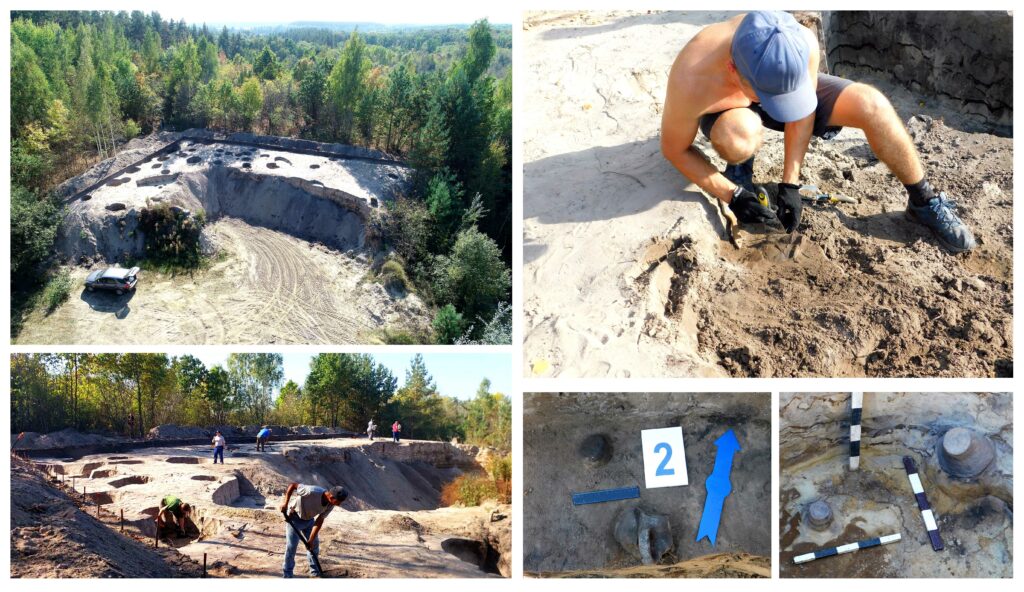
In addition, a small excavation took place at the Kotelva II settlement (Fig. 3), known since the mid-1970s. At that time, during the construction of agricultural buildings, many artefacts from the Scythian period were discovered. The settlement received attention again in early 2020 due to its partial destruction during the construction of a quarry. With the beginning of the russian invasion of Ukraine in 2022, the catastrophic expansion of the quarry became a significant threat to the preservation of the settlement.
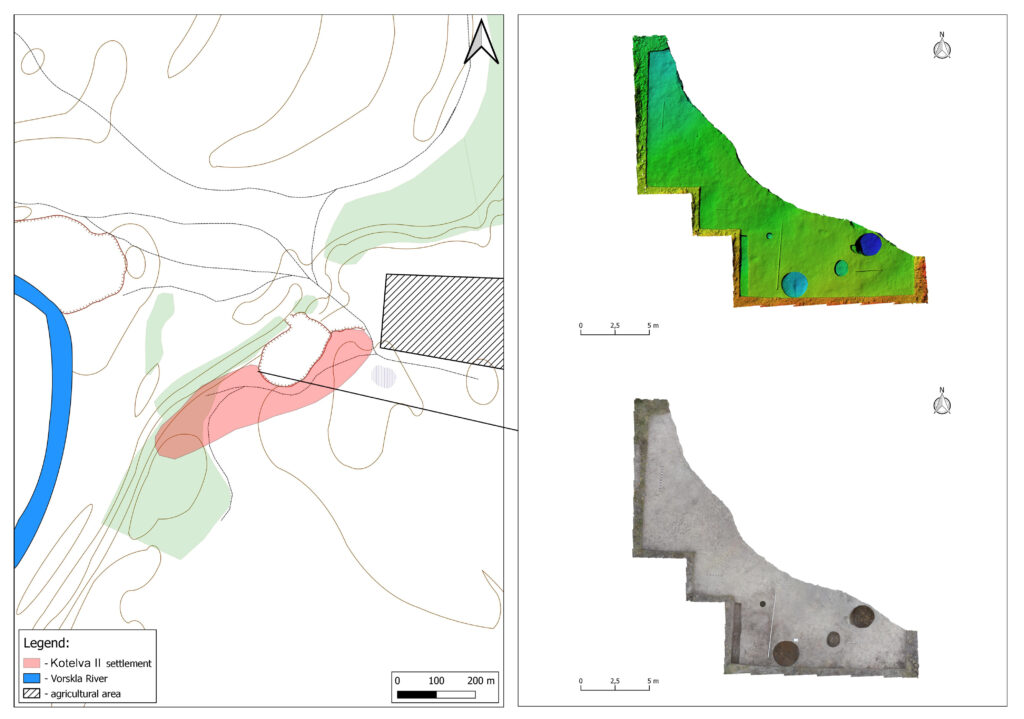
The 2023 field season at the Kotelva II settlement revealed archaeological material from the Scythian period and recorded several objects of the same period (Fig. 4). The finds also included fragments of hand-made pottery from the Bronze Age. Interestingly, closer to the slope of the terrace on which the settlement is located, objects of the Cherniakhivska culture such as fragments of circular plates and an iron arrowhead have been discovered. This culture is associated with communities of Goths. There is a significant number of Gothic settlements on the territory of the Bilsk hillfort and its surroundings. The discovery of another such settlement will allow a broader study of this historical and cultural horizon.
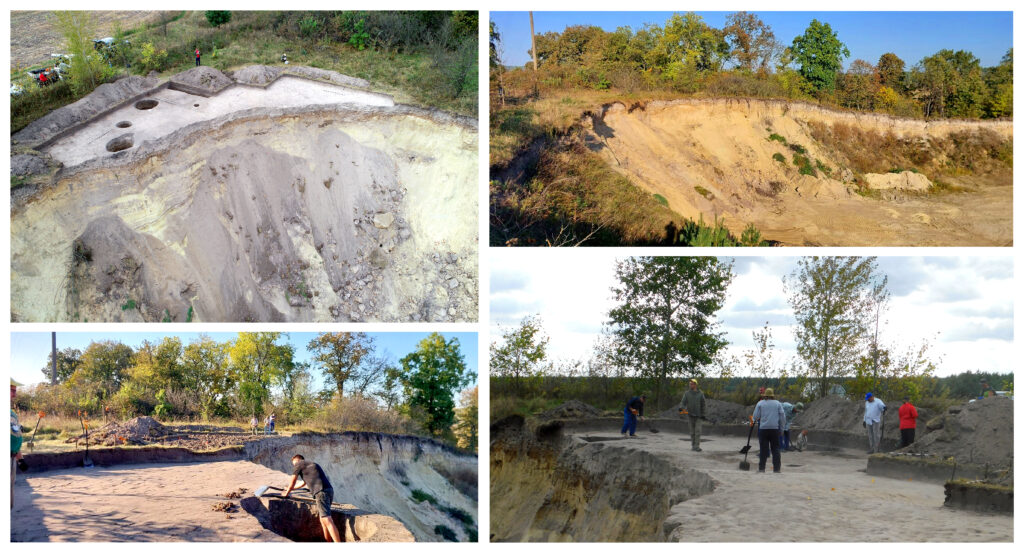
Thus, in 2023, during the excavations of the settlements of Staryi Karier and Kotelva II, it was possible to collect informative archaeological material from a wide time range (Fig. 5), to identify interesting objects and, most importantly, to save valuable information from its imminent destruction. The detailed results of the research will be presented in a series of scientific publications and will serve as a basis for future studies of the history of the middle Vorskla River.
Oleh Shaporda and Ihor Korost
